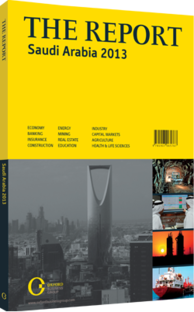A regional steel hub: The industry is expanding rapidly to meet rising demand
Steel producers in the Kingdom have good reason to feel bullish about the sector. According to a September 2012 report by RNCOS, an industry research firm, growth in local steel consumption exceeded 10% in 2011, while between 2012 and 2015 growth is expected to accelerate to a compound annual 19.5%. The potential for growth in the local steel-producing industry is highlighted by the fact that more than half of national consumption is supplied by imports. Beyond the local market, too, steel manufacturers are likely to find that their products are in high demand: a 2011 report by Steel Business Briefing found that the GCC region’s demand of 20m tonnes of steel per year far outstripped the current supply of 12m tonnes per year.
Supply Side
As for supply in the Kingdom, this is also expected to grow by around an annual 9% between 2012 and 2015, according to another 2012 report released by RNCOS. Saudi Arabia is attracting more investments in its steel industry than any other Gulf country: its accumulated total up to 2011 stood at $11.76bn or 61% of the GCC region’s $19.3bn, according to the Gulf Organisation for Industrial Consultations. The largest steel producer in the MENA region is the Saudi Iron and Steel Company, or Hadeed, which is a subsidiary of the Saudi Arabian Basic Industries Corporation. The current construction of a $630m new plant in Jubail, which is expected to be completed in early 2013, should boost Hadeed’s output capacity by 20%, from 5m tonnes to 6m. The facility is being built by Danieli, one of the world’s three largest suppliers of equipment and plants to the metals industry. Following this expansion, the plan is to continue increasing its capacity: to 10m tonnes per year by 2015 and to 15m tonnes by 2020.
Other changes could also help. “Improved infrastructure in the country can facilitate growth of the local steel industry. Currently, materials and finished product are transported via truck. If expansion of the rail networks can offer low-cost freight transport, this will lead to significant efficiency gains in the supply chain,” said Sharjeel Azar, the CEO of Al Ittefaq Steel Products.
Examples of large-scale growth are not difficult to find. One is Al Rajhi Steel, which currently represents about 20% of total Saudi production. In 2011, it announced a $4bn deal that will see the construction of a large steel complex at the King Abdullah Economic City with a capacity of 2.65m tonnes per year of steel, upon completion in 2015. Construction work was also proceeding on schedule for a new $213m steel plant in Jeddah, Al Rajhi’s CEO, Mehdi Al Qahtani, told local press in September 2012.
Alongside the Saudi heavyweights, international and regional players are increasingly looking to get involved. In late 2011, the world’s largest steel producer, ArcelorMittal, said that it hoped to begin production at a 600,000-tonne plant in Jubail, which is to produce steel pipes for the hydrocarbons and petrochemicals sectors. From India, too, state-owned RINL steel has been in talks about forming a joint venture with Al Rajhi Steel. Oman’s Al Jazeera Steel has said that it is looking to form a joint venture to enter the Saudi market. Qatar, too, has shown interest: Qatar Steel increased its stake in Saudi Arabia’s South Steel Company from around 20% to 30% in December 2011, a favourable sign for South Steel’s planned $2.6bn steel complex at Jazan.
Steely Competition
The Kingdom is not without competitors in the region. Abu Dhabi’s Emirates Steel, has ambitious expansion plans which are scheduled to bring its output capacity up to 5m tonnes per year by the end of 2014, and later to 6.5m tonnes. This is less than half the target output for Saudi Hadeed. As things stand, Saudi Arabia had acquired 49% of all steel mills in the GCC region – 184 steelworks – by 2011, followed by the UAE with 31%. Local steel producers have been criticised for monopolising the market, resulting in an increase in the price of locally produced steel at the expense of consumers. Citing this, Saudi attorney Khalid Alnowaiser called for an updated antitrust law to restrict such practices, rather than encourage imports from neighbouring countries. Better regulation in this should help the industry reach its long-term potential.
You have reached the limit of premium articles you can view for free.
Choose from the options below to purchase print or digital editions of our Reports. You can also purchase a website subscription giving you unlimited access to all of our Reports online for 12 months.
If you have already purchased this Report or have a website subscription, please login to continue.

